Nenad Ban
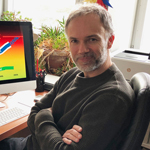 | Nenad Ban was educated at the University of Zagreb and he obtained a PhD degree at the University of California. His interest in understanding the process of protein synthesis led him for his postdoctoral work to the Department of Molecular Biophysics and Biochemistry at Yale University, where he determined the atomic structure of the large ribosomal subunit by X-ray crystallography, as part of the group in the laboratory of Thomas Steitz. These results demonstrated that the ribosome is a ribozyme. |
Lacra Bintu
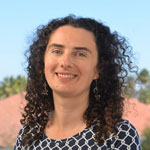 | Lacra Bintu is an Assistant Professor in the Bioengineering Department at Stanford. Her lab performs single-cell and high-throughput measurements of chromatin and gene regulation dynamics, and uses these data to develop predictive models and improve mammalian cell engineering. Lacra started working on the theory of gene regulation as an undergraduate with Jané Kondev from Brandeis University and Rob Phillips from Caltech. As a Physics PhD student in the lab of Carlos Bustamante at U.C. Berkeley, she used single-molecule methods to tease apart the molecular mechanisms of transcription through nucleosomes. She transitioned to studying the dynamics of epigenetic regulation in live cells during her postdoctoral fellowship with Michael Elowitz at Caltech. |
Clifford P. Brangwynne
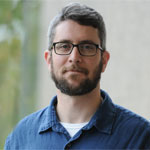 | Cliff Brangwynne obtained B.S. in Materials Science from Carnegie Mellon University in 2001, and his PhD in Applied Physics in 2007 from Harvard University. He was a visiting fellow at the Max Planck Institute for the Physics of Complex Systems in Dresden, and was a Helen Hay Whitney Postdoctoral Fellow at the Max Planck Institute for Molecular Cell Biology and Genetics in Dresden. Since 2011 he has been a faculty member in the Department of Chemical and Biological Engineering at Princeton University, and is currently the June K. Wu ’92 Professor of Engineering and Director of the Princeton Bioengineering Initiative. His primary research interests are in biological self-assembly, particularly in the role of intracellular liquid-liquid phase separation. Dr. Brangwynne is the recipient of numerous awards including a Searle Scholar Award, a Macarthur Fellowship, Wiley Prize, HFSP Nakasone Award, and he is currently a Howard Hughes Medical Institute Investigator. |
John Briggs
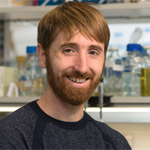 ©Copyright MRC LMB ©Copyright MRC LMB | John Briggs is a Programme Leader at the MRC Laboratory of Molecular Biology in Cambridge. John completed his DPhil in Structural Biology at Oxford University, UK in the Lab of Stephen Fuller, where he performed cryo-electron microscopy of retroviruses. After a short postdoc in Munich, in 2006 he set up his own research group at the European Molecular Biology Laboratory, Heidelberg. His group has worked on understanding the structure and the assembly/disassembly mechanisms of COPI, COPII and clathrin coated vesicles and of viruses including HIV-1 and influenza. John’s group has developed and optimized methods for cryo-electron tomography and for correlative light and electron microscopy. His lab moved to the LMB in January 2017. |
Hiro Furukawa
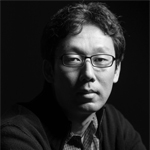 | Dr. Furukawa received his undergraduate degree in chemistry from Tufts University and his Ph.D. in biophysics/biochemistry from the University of Tokyo. After his postdoctoral study at Columbia University and Vollum Institute, he became a faculty member at Cold Spring Harbor Laboratory in 2006. His laboratory works on structure and function of membrane transport machinery involved in neurological processes and diseases by implementing a combination of x-ray crystallography, cryo-EM, and electrophysiology. In particular, his group has been working on structures and functions of glutamate-gated ion channels called NMDA receptors and large-pore channels such as CALHM and Pannexin. |
John Gross
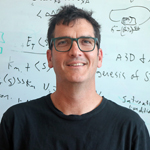 | The lab of John Gross is broadly interested in the conformational control of gene expression. Current studies are focused on understanding how biomolecular condensates impact enzyme activity during mRNA decay and heterochromatin formation. The group uses a combination of approaches from quantitative biochemistry to molecular biophysics in concert with functional studies in cells. Dr. Gross was a post-doctoral fellow at Harvard Medical School and received his Ph.D. from MIT. Currently, Dr. Gross is a Professor of Pharmaceutical Chemistry at the University of California, San Francisco. |
Nicholas Ingolia
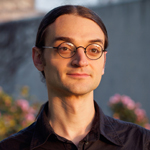 | Nicholas Ingolia is an Associate Professor of Biochemistry, Biophysics, and Structural Biology in the Department of Molecular and Cell Biology at the University of California, Berkeley. He received his Ph.D. from Harvard University (2006) for work in systems biology with Andrew Murray. As a post‐doctoral scholar working with Jonathan Weissman at the University of California, San Francisco, he developed ribosome profiling, an approach for genome‐wide measurements of translation with single‐codon resolution. He started his independent lab at the Carnegie Institution, Department of Embryology in 2010 and moved to UC Berkeley in 2013. His research addresses the molecular basis for translational control of gene expression and the role of this regulation in the cell. He continues to develop high‐throughput approaches to address the organization and function of RNA‐protein interactions in the cell. |
Takuhiro Ito
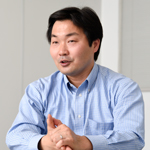 | Takuhiro Ito is a Team Leader of the Laboratory for Translation Structural Biology in RIKEN BDR. He received his Ph.D. from the University of Tokyo in 2001. He moved to the United States for his postdoctoral training in Gerhard Wagner Laboratory in Harvard Medical School, and started NMR structural study of eukaryotic translation initiation factors. After coming back to Japan, he started X-ray crystallographic study of translation-related biomolecules as an assistant professor in Graduate School of Science, the University of Tokyo. He joined RIKEN CLST as a PI in 2013, and now belongs to RIKEN BDR. Currently his laboratory focuses structural studies of eukaryotic translation machinery mainly by cryo-EM. |
Kyogo Kawaguchi
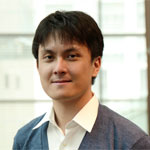 | Kyogo Kawaguchi is a team leader of Nonequilibrium Physics of Living Matter RIKEN Hakubi Research Team at both RIKEN Center for Biosystems Dynamics Research and RIKEN Cluster for Pioneering Research. He was trained as a theoretical physicist and started conducting biology experiments during his PhD studies at The University of Tokyo. After obtaining his PhD, he did his postdoctoral work at the Department of Systems Biology at Harvard Medical School, and returned to Japan to take the current position in 2018. Kyogo is interested in addressing themes of biology through concepts of theoretical physics and simple experiments, and is currently most curious about the rules governing multicellular dynamics and the physical mechanism of cell fate commitment. |
Hiroshi Kimura
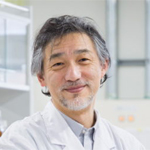 | Hiroshi Kimura currently serves as a professor at the Department of Biological Sciences, Tokyo Institute of Technology. He received his Ph.D. in Science from Hokkaido University in 1996 and started his research career as a postdoctoral research associate at the University of Oxford. After returning to Japan in 2002, he worked as an associate professor at several universities, and in 2014, was appointed as professor at Tokyo Institute of Technology. He specializes in cell biology, epigenetics, and gene regulation. To understand how transcription by RNA polymerase II is regulated by histone modifications and chromatin structure in vivo, he is tracking histone and RNA polymerase II modifications in living cells and organisms by developing new fluorescent probes. |
John Kuriyan
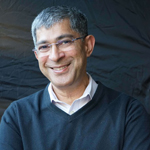 | John Kuriyan earned his PhD in 1986 from the Massachusetts Institute of Technology. He was a post-doctoral fellow with Professors Martin Karplus (Harvard) and Gregory A. Petsko (MIT). From 1987 to 2001 he was on the faculty of The Rockefeller University, New York, where he was promoted to full Professor in 1993. He is a Professor of Molecular and Cell Biology and also of Chemistry at the University of California, Berkeley, a position he has held since 2001. Dr. Kuriyan is also an investigator of the Howard Hughes Medical Institute, having been appointed in 1990. He is a member of the U.S. National Academy of Science and a Foreign Member of the Royal Society (London). |
Hitoshi Kurumizaka
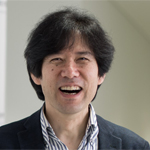 | Hitoshi Kurumizaka is a professor at the Institute for Quantitative Biosciences at the University of Tokyo.
After receiving his Ph.D. from Saitama University in 1995, he did his postdoctoral training in the United
States with Dr. Alan Wolffe at the National Institutes of Health. He was a research scientist at the RIKEN
Institute, and was a professor at Waseda University before joining the University of Tokyo in 2018. He
began his career studying the mechanisms of DNA recombination, but soon broadened his scientific
interests to study the chromatin structure‐based, regulatory mechanisms. Over the past two decades, his
laboratory has developed various in vitro chromatin reconstitution methods, which combined with X‐ray
crystallography and cryo‐electron microscopy techniques, enabled for the analysis of chromatin‐templated
reactions at atomic resolution. The Kurumizaka laboratory continues to unravel the structural versatility and
dynamics of nucleosomes, especially during transcription, repair, and recombination, providing insights into
the mechanisms of genome regulation. |
Leonid Mirny
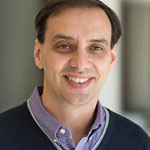 | Leonid Mirny is a Professor at the Institute for Medical Engineering and Science, and the Department of Physics at MIT. He received his PhD in Biophysics from Harvard University. After serving as a Junior Fellow at Harvard Society of Fellows, he joined the MIT faculty. He has been studying physical principles underlying various biological phenomena, and most recently the Physics of Chromosomes. Since 2009, the Mirny group has been analyzing Hi-C data, developing tools for such analysis, and developing biophysical models of chromosome organization. In collaborations with experimental groups, the Mirny lab has examined chromosome reorganization during the cell cycle, proposed mechanism of chromatin compartmentalization during interphase, and principles of bacterial and yeast chromosome organization. Most recently, the Mirny group has proposed, based on theoretical principles and Hi-C data, that chromosomes are folded by the process of loop extrusion. This universal mechanism can compact and segregate chromosomes during mitosis, and, when modulated by extrusion barriers, can form interphase domains. The loop extrusion hypothesis has been supported by a wealth of experimental data ranging from in vivo depletions to in vitro single-molecule observations. |
Julien Mozziconacci
Julien Mozziconacci is a professor at the National Museum of Natural History in Paris. He was trained as a theoretical physicist and received his PhD in Physics on the mutli-scale architecture of chromosomes. He has been working since then on modeling chromosome structure, from nucleosomes to whole nuclei, by integrating various experimental approaches. His main current interests are the role of DNA repeats in genome function and evolution, and the application of deep learning to DNA sequences. |
Eriko Nango
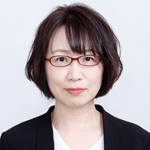 | Eriko Nango is a professor at the Institute of Multidisciplinary Research for Advanced Materials, Tohoku University. Her lab is developing techniques for visualizing protein dynamics using a quantum beam such as an X-ray free-electron laser. She obtained her Ph.D. degree in Chemistry from Tokyo Institute of Technology. She was an assistant professor at Tokyo Institute of Technology (2004-2010). After she resigned from the previous position due to family matters, she joined RIKEN SPring-8 Center as a research associate (2010-2012, and 2013-2018 as a research scientist). She then moved to Kyoto University as an assistant professor and became an associate professor in 2019. |
Eva Nogales
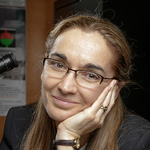 | Eva Nogales carried out her bachelor studies in Physics at the Universidad Autónoma de Madrid. During her graduate work at the Synchrotron Radiation Source in the UK, she used SAXS and cryo-EM to investigate the assembly of tubulin polymers. Her postdoctoral work in the lab of Ken Downing at the Lawrence Berkeley National Lab produced the first atomic structure of tubulin using electron crystallography. She joined the Molecular and Cell Biology faculty at UC Berkeley in 1998. Since 2000 she is an HHMI Investigator. Presently she is a Professor of Biochemistry, Biophysics and Structural Biology in the MCB department at UC Berkeley. |
Rohit Pappu
 | Rohit Pappu is the Edwin H. Murty Professor of Biomedical Engineering and Director of the Center for Science & Engineering of Living Systems (CSELS) in the James McKelvey School of Engineering at Washington University in St. Louis, USA. Dr. Pappu received his PhD in Biological Physics in 1996 from Tufts University and did postdoctoral work at Washington University in St. Louis and the Johns Hopkins University. His early interests were in protein folding dynamics and physical descriptions of unfolded states. These interests morphed into systematic investigations of the form and function of intrinsically disordered proteins and protein aggregation in neurodegeneration studied through the lens of phase separation. Pappu's interests in the physics of phase transitions of polymeric systems has paved the way for his lab's work on spatial and temporal organization of cellular matter. Pappu's efforts are driven by a combination of theoretical work, multiscale physics-based computations, bioinformatics, experiments in vitro, and a network of collaborations with leaders in the field of disordered proteins and biomolecular condensates. |
Roland Riek
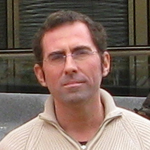 | Dr. Roland Riek is Full Professor of Physical Chemistry at ETH Zurich, Switzerland and adjunct Professor at The Salk Institute for Biological Studies in the USA. His group conducts research in the field of Biological NMR. |
Viviana I. Risca
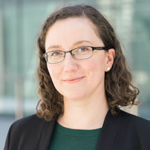 | Viviana Risca received her Ph.D. in biophysics from the University of California, Berkeley, in 2012. After working as a postdoc in Dr. William Greenleaf’s lab, co-advised by Dr. Aaron Straight at Stanford University School of Medicine, she joined The Rockefeller University in 2019 as an assistant professor and head of the Laboratory of Genome Architecture and Dynamics. Her research is focused on probing the meso-scale structure of chromatin and its implications for genome organization and integrity, transcriptional regulation, and cancer biology. To do so, her lab uses and develops sequencing-based biophysical methods and builds complementary computational tools to facilitate data analysis and interpretation through simulations. |
Shun-ichi Sekine
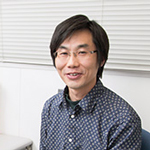 | Shun-ichi Sekine is a team leader of Laboratory for Transcription Structural Biology, RIKEN Biosystems Dynamics Research (BDR). He received his Ph.D. from the University of Tokyo for his biochemical and structural studies on molecular recognition mechanisms in a protein-RNA complex. He then moved to the RIKEN Harima institute, where he started structural studies of a bacterial RNA polymerase by X-ray crystallography using synchrotron radiation at SPring-8. He then moved to the University of Tokyo as a lecturer and associate professor, and conducted structural studies related to transcription and translation. In 2013, he became a team leader of the former center RIKEN Center for Life Science Technologies (CLST), and started research on eukaryotic RNA polymerase by employing cryo-electron microscopy. He is now continuing his research in the successor center RIKEN BDR. Currently, his laboratory is focusing on structural basis of eukaryotic transcription in the chromatin context, as well as other important issues related to transcription. |
Ichio Shimada
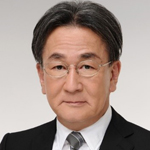 | Ichio Shimada is a Team Leader of the Laboratory for Dynamic Structure of Biomolecules in RIKEN BDR. His research interests are the development of NMR methodologies for studying larger protein complexes and functional analyses of proteins, including membrane proteins. He has served as the Professor and Dean of the Graduate School of Pharmaceutical Sciences at the University of Tokyo, as well as Director and Scientific Advisor of the Biomedicinal Information Research Center at the National Institute of Advanced Industrial Science and Technology (AIST). He is currently a council member of The International Council on Magnetic Resonance in Biological Systems (ICMRBS) and The International Society of Magnetic Resonance (ISMAR) and he was elected an ISMAR fellow in 2017, for his contributions to the field of magnetic resonance. |
Kikue Tachibana
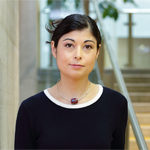 | Kikue Tachibana was educated in Austria, Japan and the UK. She studied Natural Sciences at the University of Cambridge, where she also obtained her Ph.D. working with Ron Laskey on cell cycle and cancer research (2001-2005). Kikue joined Kim Nasmyth’s laboratory at the University of Oxford for her postdoctoral research in which she investigated cohesin in ageing female germ cells (2006-2011). She led a junior research group at the Institute of Molecular Biotechnology of the Austrian Academy of Sciences, Vienna, Austria (2011-2021). Since 2019, Kikue is a Director at the Max Planck Institute of Biochemistry, Munich, Germany, where she is establishing a Department of Totipotency. Her research focus is to determine the molecular mechanisms underlying chromatin reprogramming at the start of life in early mouse embryos. |
Yuichi Taniguchi
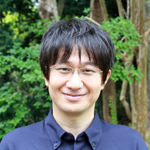 | Yuichi Taniguchi is a team leader in RIKEN BDR, as well as a professor at Kyoto University. He earned his Ph.D. under the supervision of Prof. Toshio Yanagida at Osaka University in 2006. He then worked as a postdoctoral fellow with Prof. Sunney Xie at Harvard University until 2011. Then he opened his laboratory at RIKEN as a unit leader. In 2020, he started a career as a professor at Institute for Advanced Study and Graduate School of Biostudies in Kyoto University. He works on biophysics research aiming at development of new technologies for understanding biology, based on various techniques such as imaging, sequencing, lithography, machine learning and large‐scale computation. |
Chuangye Yan
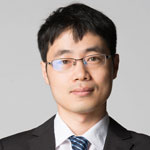 | Chuangye Yan is an assistant professor at Tsinghua University. He earned his Ph.D. under the supervision of Prof. Yigong Shi at Tsinghua University in 2015. He then worked as a postdoctoral fellow with Prof. Shi, where he determined the first high resolution cryo-EM structures of yeast and human spliceosomes, in 2015 and 2017, respectively. He also systematically solved most states of spliceosomal structures in the RNA splicing cycle during this period. |